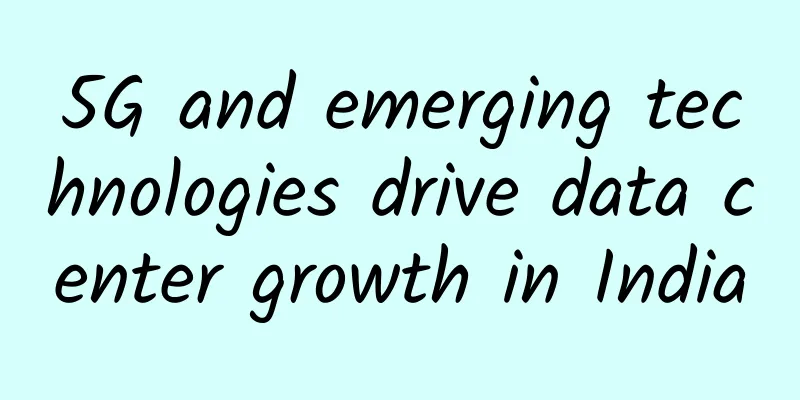5G and emerging technologies drive data center growth in India

|
Since 2018, India has made great strides in advancing industries and providing services under the Digital India Mission. According to a report by the Ministry of Electronics and Information Technology (MeitY) in collaboration with McKinsey, the Digital India initiative is expected to boost India’s digital economy to $1 trillion by 2025. The amount of data generated has grown in tandem with technological growth, and so has the demand for data centers. With the rollout of 5G in India just around the corner, data growth is expected to be much faster, and so is the impact on data centers. According to JLL, the data center industry is likely to add more than 1,000 MW of capacity by 2023 to accommodate the growing demand amid rapid digitalization. The industry is expected to double its installed capacity to 1,008 MW by 2023 from 499 MW in January-June 2021. We are also seeing an increase in the number of data edge centers being developed and an acceleration in cloud migration. The Internet of Things and “smart everything” are driving cloud migration. Artificial intelligence is becoming increasingly important to handle the increasing amounts of data and latency-sensitive applications. Let’s take a closer look at these trends and how they will impact data center growth in India. 5G services will drive exponential growth in data consumptionService providers and private companies will continue to evaluate the most cost-effective ways to increase capacity and capabilities for 5G implementation plans. On the data center side, 5G provides faster access to information, which will lead to more edge data center deployments. As more data becomes latency-sensitive and requires faster access speeds, we are seeing a shift from a large core, small edge data center architecture to a smaller core, larger edge data center architecture. Cloud core 5G will greatly increase the construction of data centers for private enterprises. If you can develop private 5G using a cloud architecture with local radio in the cloud, you will have a data-intensive, latency-sensitive application, which will also drive the growth of data centers and edge data centers. IoT will continue to soarThe Internet of Things (IoT) is growing at an astonishing rate. According to Frost & Sullivan, the Indian IoT market is expected to reach $9.28 billion by 2025, up from $4.98 billion in 2020. Managers are looking closely at how to improve operations, such as optimizing transportation and installing sensors in the right locations to assist in this effort. When it comes to enabling IoT and smart devices, it all comes down to data. If you think about all the tiny data points involved with something as simple as a door sensor (when was it opened, when was it closed, if it was locked or unlocked, who unlocked or locked it) and multiply that by the number of sensor applications (temperature, occupancy, lighting, water usage, etc.) it’s all data that needs to be stored somewhere and accessed by an application or user. The infrastructure that makes this work is all in the data center. The IoT is also driving the growth of edge data centers as we see more and more data that is time-sensitive and needs to be processed at the edge. Today, public cloud companies are responsible for most edge deployments, and some providers are building edge data centers for latency-sensitive applications such as video streaming and delivery. For example, the rapid growth of streaming video services is a major driver of this trend. In fact, video applications—such as entertainment, security monitoring, data mining, and security—will be most impacted by the IoT in the data center. Rather than evaluating static data or photos, companies need to store this data and act on it in real time. Cloud migration will continuePeople are flocking to the cloud due to its scalability and low cost. According to the 2022 EY-NASSCOM Cloud Survey, while 67% of large enterprises have accelerated their cloud adoption, 39% of mid-sized companies and 38% of small companies have started their cloud journey. At the end of 2021, HPE reported 46% year-over-year growth in orders for its GreenLake cloud platform and about 40% year-over-year growth for AWS. When you can rent something and scale it in days instead of years to plan and build something, it's a compelling argument for the cloud. Both public and private cloud infrastructure will grow. Large enterprises will use a hybrid model, while smaller companies will use public cloud alone. What will slow growth is data security and compliance restrictions. We will increasingly rely on artificial intelligence and augmented realityIn 2022, use cases combining AI and ML with augmented reality (AR) will increase significantly. Facebook announced a rebrand and is now positioning the entire company on AR-driven virtual worlds. AR will also be used for interfaces, so B2C marketing, sales, training, and service applications will all benefit from AR. For example, AR for data center technicians could be linked to a work order application, allowing them to use their smartphone to see which cable in a switch to repair. The rise of the Metaverse will also drive increased use of AR. We can see a point in the near future where users can replicate physical interactions with virtual ones. We are used to seeing each other in videos, we will get used to seeing each other in the AR world. We need AI because as you get more data, you’ll need AI to process it – you can’t do it manually anymore (think facial recognition or contact tracing). Machine learning can be used wherever there is a lot of complex data. This could help solve supply chain crises by automatically determining shipping routes and helping with logistics, for example. The most dangerous aspect of AI is trusting it too much. We could put too much emphasis on algorithms instead of feeding them high-quality data. Any AI bias could lead to poor decisions and incorrect assumptions when it comes to data. Single-mode fiber use will grow with migration to 400/800 Gb networksSingle-mode fiber adoption is accelerating. While multimode fiber remains popular, single-mode fiber deployments are growing faster than multimode deployments. As data centers reach speeds of 400 or 800 Gbps, we are seeing more and more single-mode fiber being deployed, especially in cloud and hyperscale data centers. You might think that reaching 10Gb or 100Gb today means the transition to 400Gb is a long way off. However, if you add up the number of 10Gb (or faster) ports you are responsible for supporting, you’ll find that the need to move to 400Gb and beyond isn’t actually that far away. Hybrid working becomes mainstreamIn 2021, the widespread use of video conferencing for work, education, and leisure has had a significant impact on data centers, and companies in India are now adopting hybrid work styles. When people record live video chats, a lot of video storage space is required, and users need to access that video quickly and without jitter. This will also affect data centers. Therefore, as 5G, IoT, remote work, and cloud migration increase demand on data centers, IT managers need to respond to increased speeds by scaling storage, using AI and ML to process data faster, building edge data centers, and deploying single-mode fiber. Despite ongoing COVID and supply chain issues, we expect to see more data center activity as IT managers reorganize for the new normal. |
<<: "Ruisu API Security Governance Solution" won the double award of "Xinzhi Award"!
>>: Let’s talk about what communication is.
Recommend
In-depth analysis of China's 5G commercialization from eight dimensions: trends, challenges, development and future
1. Why choose June 6 to issue 5G commercial licen...
Do you always feel that the Internet speed is slow? You may be in trouble
We say that there are many reasons for slow Inter...
The Ministry of Industry and Information Technology reminds you to set the SIM card password in time. Doing these four things after losing your phone is more important than calling the police.
[[347353]] If you lose your phone, do you know wh...
With 5G commercialization imminent, what new moves will the three major operators make?
5G pre-commercialization is imminent, and the thr...
CloudServer: $4/month KVM-2GB/50GB/5TB/three data centers
CloudServer is a new VPS hosting company, which w...
Regarding number portability in my country, you should pay attention to these 7 pieces of information conveyed by the Ministry of Industry and Information Technology
Throughout 2019, there are actually two important...
Why restarting the router frequently makes WiFi faster
Using WiFi to surf the Internet has become an ind...
[11.11] CMIVPS annual promotion VPS host 50% off, Hong Kong large bandwidth/direct line monthly payment starts from US$3.5
CMIVPS released a Double 11 promotion plan, which...
Inter-thread communication in concurrent programming
The goal of thread communication is to enable thr...
ZgoCloud: $14/quarter-AMD Ryzen9, 1GB memory, 30G NVMe, Osaka, Japan data center
ZgoCloud domain name registration started in Apri...
An article to help you understand HTTPS
I encountered some problems when working on HTTPS...
#已跑路#Limewave adds 15% off on AMD Ryzen series, 2G memory package 1Gbps unlimited traffic starts at $5.95/month
【Attention】This merchant has run away!!! Limewave...
It’s time to launch 5G applications
Recently, ten departments including the Ministry ...
Cloud, IPv6 and all-optical networks
With the development of technologies such as 5G a...
ChangeIP: Los Angeles high-defense KVM annual payment starts at $19.2, monthly payment is available, and unlimited traffic is optional
ChangeIP is a foreign VPS hosting company registe...








![[11.11] Megalayer: US/Hong Kong dedicated servers starting from 299 yuan/month, 1Gbps dedicated servers starting from 499 yuan/month](/upload/images/67cac02b1dc92.webp)
